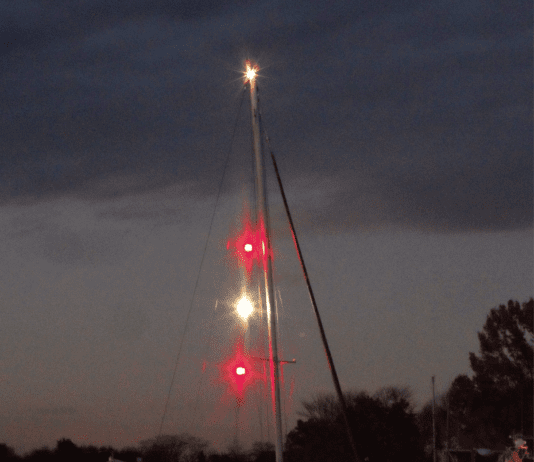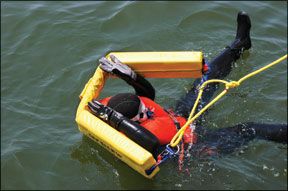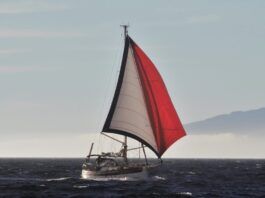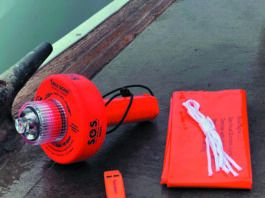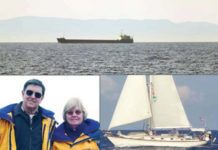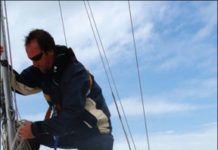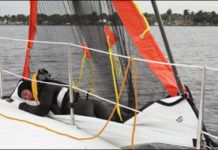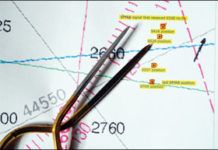Salus PFD Fits Infants Less Than 20 Pounds
In October 2006, Practical Sailor tested infants life jackets and our top pick was MTI Adventurewears Bay Bee 201-I, one of the few jackets we looked at that met our chief criteria for an infant life vest: flotation that turned the infant face up and kept his head well above water, comfortable snug fit, easy donning, and a wide grab strap near the top that allowed someone to easily lift the child from the water or dinghy.
Marine Electronics: AIS Gets Ocean Tested Near Dardanelles Strait
Joe and Lee Minick added an Automatic Identification System (AIS) receiver to the nav station of their Mason 43, Southern Cross, and have used it for several years in some of the most heavily traveled waters of the world. Required on large commercial vessels, AIS devices add a whole new dimension of collision avoidance, transmitting dynamic information about a vessels speed, course and position plus static information including a vessels name, call sign and Mobile Marine Service Identity (MMSI). With a Class A AIS and a more recent Class B AIS system for small craft, AIS changes the landscape in marine navigation. The Minicks report in Practical Sailor proves how useful AIS can be for cruisers and other small boaters.
What is the Best Way to Stay Hydrated at Sea?
As the summer heats up, we were reminded that staying hydrated and healthy is as essential to a safe sail or a successful race as having the right gear on board. Dehydration occurs when the amount of water leaving the body is greater than the amount being taken in. It can rob muscles of strength and can fog the mind, compromising a sailors boat-handling ability and capacity to make tactical decisions. It can also lead to seasickness, or be a result of mal de mer. Its easy to prevent: Just be sure to get enough of the right kind of fluids before, during, and after sailing. But what are the right fluids? With the advice of a dietitian from New York Presbyterian-Weill Cornell Medical Center, Practical Sailor weighed the pros and cons-from a sailors standpoint-of various beverages marketed for athletes, including plain old water, coconut water, vitamin-enriched water, and sports drinks.
Shedding Light on Safety
A recent ocean race-aboard a Cape Dory 25 sans lifelines in 30- to 40-knot winds and 5- to 10-foot seas-presented a good opportunity to sea-trial Wichards LyfSafe jackline kit. Wichard Inc., which is based in France and has an office in Vermont, has been making marine hardware and accessories for more than 30 years. Its LyfSafe kit offers a ready-to-go jackline setup and comes with everything needed to install the system.
Seascoopa Man-Overboard Recovery Gear Tested Against Lifesling2
Practical Sailor tests the Seascoopa man-overboard device and compares it to our top pick in the previous man-overboard device test, the horseshoe buoy Lifesling2. Seascoopa solves many of the problems of other parbuckle-type devices in that it is compact, lightweight and has an interlocking three-piece carbon-fiber whisker pole that holds the trapezoid-shaped net out at right angles to the boat. The ultimate goal of the device is to make it possible for a single person to safely secure and lift a much heavier person aboard with minimal effort. In addition to reducing the risks associated with a vertical lift, the Seascoopa aims to simplify making contact with the victim. Because it can be employed while the vessel is slowly making way, the recovery involves less stationary bobbing, when the boat is at the mercy of wind and waves.
Mailport: May 2010
Letters to the editor in May 2010 included topics: lightning, tsunami warnings, MOB retrieval and cam cleats.
TruPlug is a Handy Emergency-kit Tool
Spring is here, and that means its time for systems and safety checks. Among the items that should be on your to-do list are checking your seacocks and making sure essential safety gear is on board. For us, that has always included keeping an inventory of soft wood thru-hull plugs for plumbing emergencies, but this year, we decided to also add a few of Forespars new closed-cell foam TruPlugs.
What is the Best Backup for a 406 EPIRB?
Maritime search and rescue missions prompted by distress alerts from emergency position indicating radio beacons (EPIRBs) have topped 6,000, and that number continues to grow. Although Practical Sailor recommends having a GPS-equipped 406-MHz EPIRB (GPIRB) on board, two means of satellite signaling for help is definitely better than one, and a few hundred dollars invested in a secondary tracker or beacon is worth it. In this article, we examine supplemental emergency signaling and tracking devices, including government-supported systems such as the ACR AquaLink Personal Locator Beacon, and private-network systems such as SAT phones and The Spot Messenger.
PS Advisor: Fires at Sea and Raft Stowage
I need to buy a marine offshore life raft, and I’ve been considering stowage spots. I considered a deck-mounted canister. But I’m concerned that my wife would not be able to deploy the raft safely. The canister-packed rafts are typically too heavy for her to lift, and I seriously doubt she’d be able to control one on a wet, heaving deck in heavy weather. I was all set to store the raft in one of our lazarettes, and then it occurred to me that the raft might be particularly vulnerable to an engine-room fire, because the genset and propulsion engine compartments are located underneath the cockpit sole, inboard of the lazarettes. Both engines are diesel, and I have an automatic fire extinguisher. Nonetheless, the fact that a fire would likely start in one of those engine rooms has me rethinking my idea about stowing the raft in the lazarette. Do you have any information on raft fire resistance?
Putting Words into Practice
This months report on man-overboard recovery (pages 7-11) offers a chilling reminder of why our testers spend so much time evaluating jacklines, harnesses, and other equipment designed to keep us onboard. Safe recovery of a person in the water leaves little margin for error: "A two-minute spinnaker takedown can leave a victim more than a quarter-mile away," writes Technical Editor Ralph Naranjo, author of that report.
































